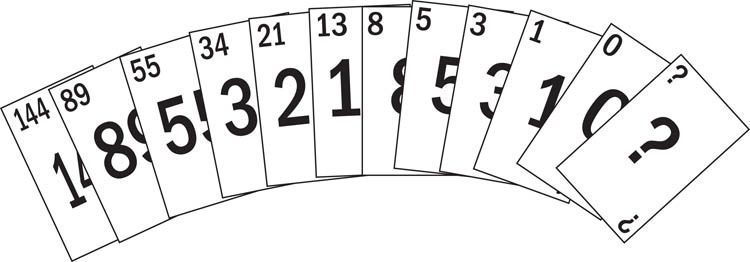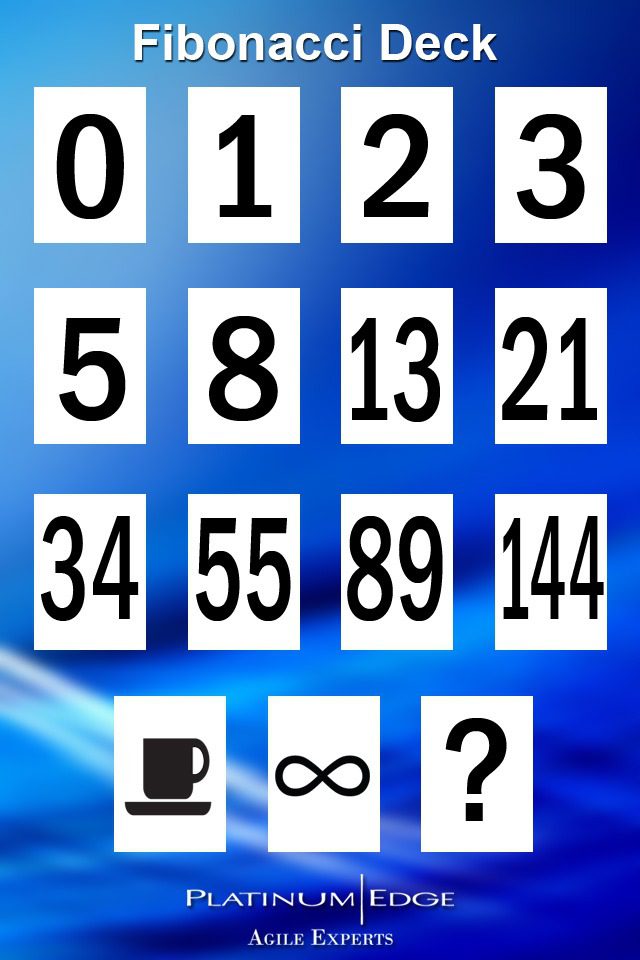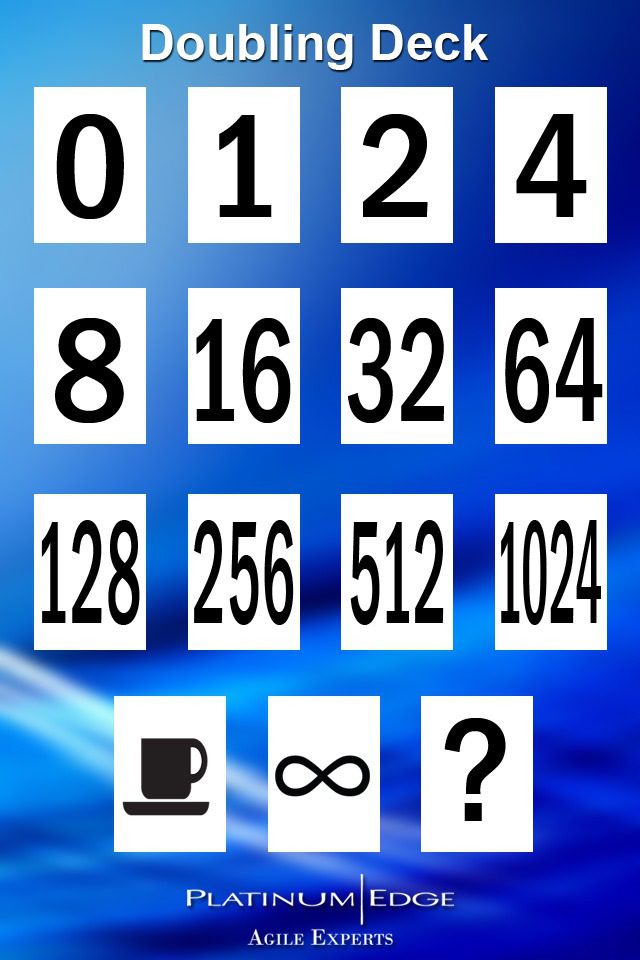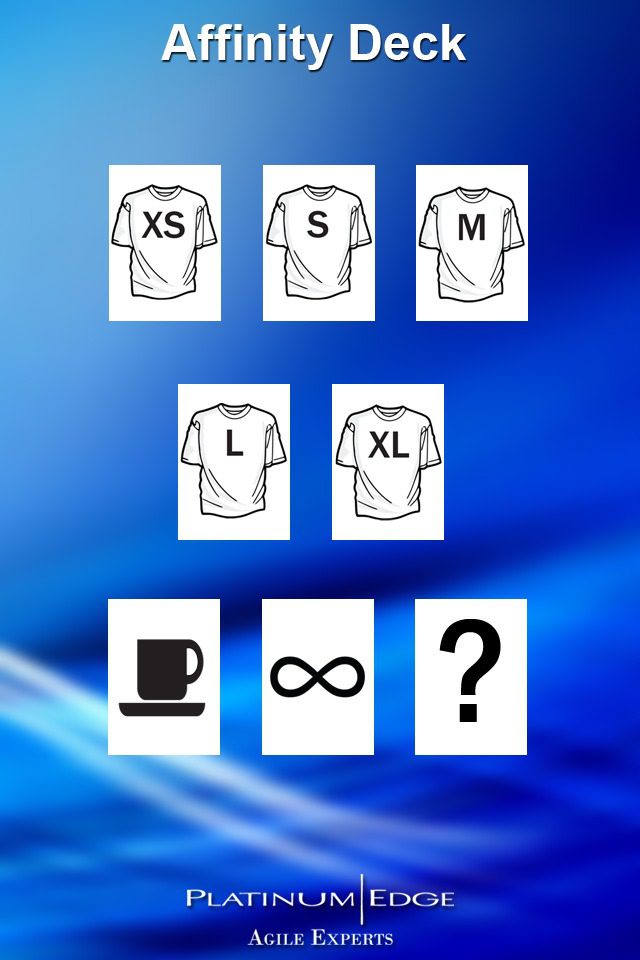
One of the most popular ways of estimating requirements is by playing estimation poker, sometimes called Planning Poker®. Estimation poker is a game scrum teams can use to determine relative requirement size and to build consensus among development team members. When teams play estimation poker they not only create more accurate estimates but they also have fun while doing it!
To play estimation poker, each development team member will need a deck of estimation poker cards. The numbers on these cards, called story points, often use the Fibbonacci sequence. The development team can also use doubling decks, in which each subsequent number is twice the value of the previous number, or affinity decks containing t-shirt sizes that the team can use for relative estimation. Only the development team plays estimation poker. To play,
- Provide each development team member a deck of estimation poker cards or download the Platinum Edge estimation poker app.
- Starting with a moderate user story, the players decide on an estimate – using story points – that they can agree on for that user story. This user story becomes the baseline user story.
- The product owner then reads a new high-priority user story to the players. The players ask any necessary clarification questions for them to feel comfortable estimating.
- Each player selects a card representing his or her estimate of the effort involved to complete the user story, per the definition of done, and lays the card face-down on the table, making sure no other players can see their card.
- Once each development team member selects a card, all players turn over their cards simultaneously.
- If the players have different story point estimates:
- The players with the highest and lowest scores talk about their assumptions, including what’s contained in the definition of done, and why they think the estimate for the user story should be higher or lower, respectively. The players compare the effort for the user story against the baseline story. The product owner provides more information about the user story, as necessary.
- Once everyone agrees on the assumptions and receives any necessary user story clarifications, the players reevaluate their estimates and place their newly-selected cards on the table. Once the product owner has provided any additional clarifications, repeat items four and five.
- If the story points are still different, the players repeat the process approximately three times.
- If the story points continue to be different, the scrum master facilitates the scrum team’s consensus on a story point number.
- The players repeat steps 3 through 6 for each user story until all user stories have been estimated.
Fibonacci Deck
The Fibonacci deck makes use of the Fibonacci sequence, where each subsequent number is the sum of the two previous numbers. For relative estimating, we use numbers from zero to 144.
- Numbers zero through eight are typically for sprint-sized user stories.
- Numbers 13 through 34 are for release-level epics.
- Numbers 55 through 144 are for larger features often represented in the product roadmap.

Doubling Deck
The doubling deck simply doubles each subsequent number. For relative estimating, we use numbers from zero to 1024.

Affinity Deck
The affinity deck uses t-shirt sizes from XS to XL. T-shirt sizes are a simple way to understand relative estimating, and product owners often assign numbers to them after an estimation session.

You can play estimation poker at any point on your project, but you definitely want to play it during product roadmap development, and as you progressively break down user stories for inclusion in releases and sprints. Be sure to make it fun and you will find that the development team will get into a planning rhythm and become more adept at quickly estimating user story effort.

